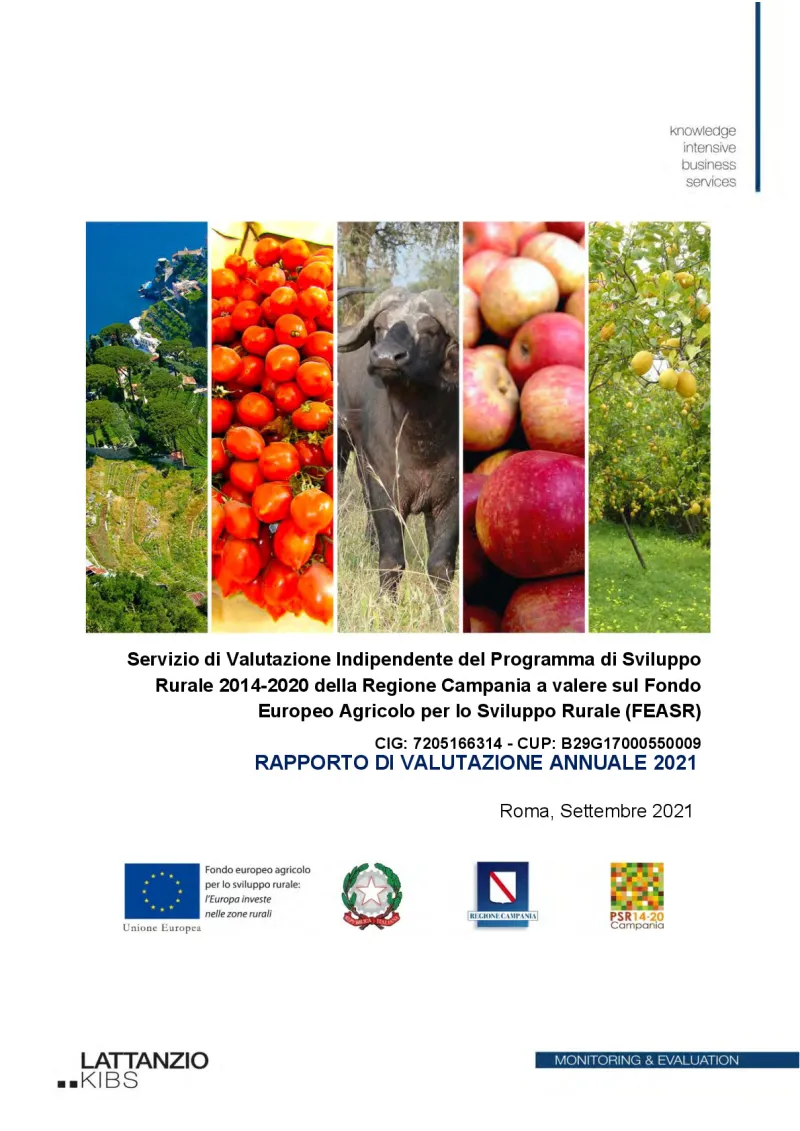2021 annual evaluation report of the Campania region
The annual assessment report analyses the use of resources, state of implementation and verification of the effectiveness and efficiency of the Campania region’s 2014-2020 Rural Development Programme (RDP).
- Italy
- 2014-2022
- Environmental impacts


The RDP of Campania finances actions under all six rural development priorities, focusing on the conservation, restoration and enhancement of ecosystems related to agriculture and forestry, enhancing the competitiveness of the agricultural and forestry sector, and promoting social inclusion and economic development in rural areas.
Cross-cutting methods/instruments that were considered to be relevant to the evaluation of different Focus Areas include:
(1) territorial analyses that support valorisation and deepen some of the result and impact indicators;
(2) an analysis of farm trajectories to verify the characteristics of Campania farms and the development path undertaken with respect to some key variables (competitiveness and ecological footprint).
The methodological choice for analysing the dataset containing the survey sample of beneficiaries for the RDP 2014-2020 favoured using a stratified sampling technique instead of basic sampling, such as simple random sampling. Thanks to the availability of a priori information on beneficiaries and the assumption of specific stratification criteria (e.g. Focus Area, intervention and geographical location), it was possible to group statistical units into homogeneous subpopulations, giving rise to a sampling whose intrinsic properties saw the same number extracted to more efficient estimates.
However, the sampling process involved a desk analysis to segment and control the initial database from certified administrative sources.
Primary data was obtained from sample surveys and other community-type techniques. Secondary data was obtained from SISMAR monitoring data, SIAN AGEA monitoring data, regional monitoring data, project files and a progress report on public expenditure of RDPs.
With regard to the efficiency of the regional administration, the system has shown the existence of many limitations and problems on different levels.
Due to the limitations imposed by the COVID-19 pandemic, the evaluators considered a mandatory way to ensure a level of interaction with experts that would make results more robust in light of the time available for its implementation. Of the 15 selected experts, almost all contributed to the three phases of sharing proposals and interacted with the evaluator.
The full report provides recommendations for each subject/area of analysis.
Despite the managerial and operational difficulties, some good practices have also been highlighted that the region has implemented in the current RDP. This also concerned the previous programming cycle and the actions and good practices other regional administrations and the National Rural Network implemented.
Author(s)
Lattanzio KIBS
Resources
Documents
Servizio di valutazione indipendente del programma di sviluppo rurale 2014-2020 della regione Campania a valere sul fondo europeo agricolo per lo sviluppo rurale (FEASR)
(PDF – 5.36 MB – 369 pages)